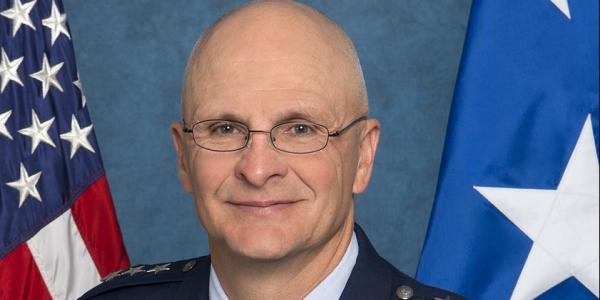Value and Speed in Acquisition Grow Through Flexibility and Innovation
The Air Force can move down the cost/schedule curve to benefit value delivered to the warfighter, and the key is communications and dialog, said Lt. Gen. Arnold W. Bunch Jr., USAF, military deputy, Office of the Assistant Secretary of the Air Force for Acquisition, during his address to the AFCEA International/GMU Critical Issues in C4I Symposium.
Weapon system acquisition costs and schedules are trending exponentially, and unsustainably, up and to the right. The Air Force can move down the cost/schedule curve to benefit value delivered to the warfighter, and the key is communications and dialog, according to Lt. Gen. Arnold W. Bunch Jr., USAF, military deputy, Office of the Assistant Secretary of the Air Force for Acquisition.
Industry must keep the Air Force honest for starters, the general explained. “If we are asking for something industry cannot do, they need to tell me that from the beginning,” he stated during his address to the AFCEA International/GMU Critical Issues in C4I Symposium.
The acquisition cost curve really is not about cost but about value, the general relayed. The cost curve ranges from exquisite at the top, to best value in the middle, to sufficient at the end, and you have to define the curve, he explained.
The problem is a lack of meaningful cost curve baselines. Timescales for a meaningful assessment can be long, and practical limitations exist to performing controlled experiments within the acquisition system, he said.
“We do not have to treat all acquisition as we do for the B-21.We can streamline reporting, documentation and oversight. Look at work that is required in the documentation with the goal of minimizing workload and empowering people at the local level, allowing them to implement,” Gen. Bunch stated. “Maybe you do not need something to perform faster,” he suggested, if you can alleviate some of the workload of people so they can multitask.
For the small-scale acquisitions, such as many of the cyber ones, a virtual environment would enable industry to show they can solve the problem. Then the product could be on contract in three weeks, he suggested. “We are trying to set a pattern of doing this more and more,” he added.
Specifically, he pointed out that more flexibility is needed in the area of cyber. “When I find I have a cyber problem I did not see, I need to get the solution out in the field.” To be able to respond in that way, Gen. Bunch would like to have a dollar threshold that he could use. “Give me the money, and I will execute it responsibly, and I will be responsible. The flexibility to get in the decision loop to make changes as the need changes would then be possible, but it is not now.”
Experimentation and prototyping need emphasis. We need to see if ideas work before we throw a lot of money at them, advised the general, who believes the Air Force needs to incentivize non-traditional companies to compete. That will change the behavior of a lot of people he suggested. “We have to get over the hurdle that makes it too slow and onerous to do business with us,” he related.
Risk is also something that needs to be considered. “If we have program mangers taking educated and informed risk, not wild risks, and they fail, senior leadership has to support them. If we fire the person who fails, others are not going to come forward with anything innovative,” he stated.
Delivering great value, he concluded, means “fundamentally improving the acquisition process to deliver better capabilities to our airmen, faster and cheaper.”




Comments